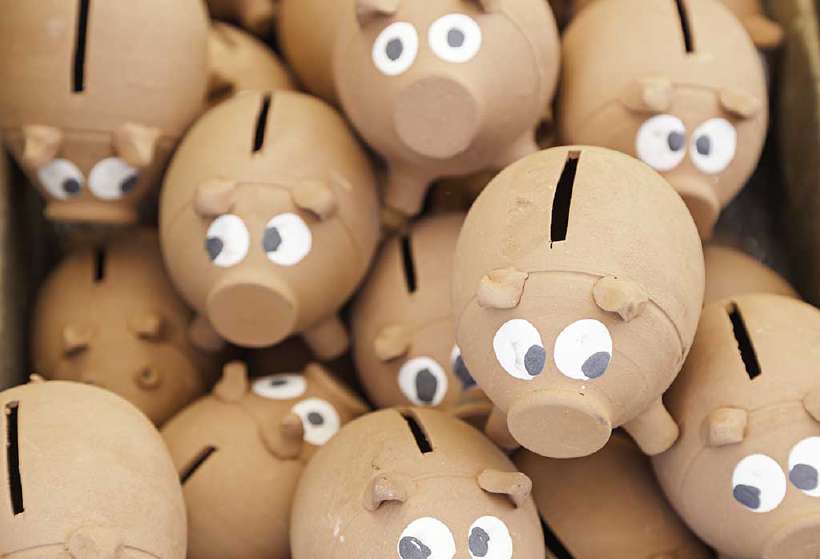Where Did Piggy Banks Come From?
Home / Science for Kids / 5Ws & H For Kids / Where Did Piggy Banks Come From?
You can find a piggy bank at almost every home. But whoever heard of pigs and savings? Pigs in a poke, yes, and pigs in a sty. But what is the connection between the sty residents and a home saving bank?
Actually none. The connecting link has to do with clay. Clay? Yes. Though coin-slotted money boxes in the shape of animals, including pigs have been in existence for centuries, the actual term came to be associated with Europe in the middle ages.
In the 15th and 16th century Europe, there were no banks to put your money into. What money people saved had to kept at home. But people earned so little that they wanted to save some money for a rainy day.

The only way they could was to put it in pots and jars. The jars were mostly made of hardened clay as metal was a costly item then and people couldn’t afford to buy a metal jar. Pots, pans, jars and other household items were made of an orange-coloured clay known as “pygg”.
People would use a jar made of “pygg” to save or “bank” what money they could. When banking started, people realised that what they were saving in “pygg” moneyboxes at home was personal banking!
Slowly over time, this “pygg bank” became corrupted to become “pig bank”. In the 19th century, potters who had heard the term decided to make a coin-saving moneybox in the shape of a pig.
Pigs, in fact, have always been the poor man’s asset. A pig would be fed leftovers and scraps of the table and be fattened for the butcher at the end of the year. In a similar vein, a piggy bank is fed coins left over from the monthly expenses, and at the end smashed to take the saved money out.
Within a short time this figurine caught people’s fancy. Fancy pig-shaped money-boxes came into the market in all shapes and sizes, with cute noses, and curly tails. Naturally this caught the attention of the children and the rest is pig-banking history. As you ‘sow’, so shall you reap, as they say. There hasn’t been a better bit of porcine wisdom since.
369 words |
3 minutes
Readability:
Grade 5 (10-11 year old children)
Based on Flesch–Kincaid readability scores
Filed under: 5ws and h
Tags: #money, #europe, #piggy bank
You may also be interested in these:
Toy Gang
The Beggar who is a Money Lender
Green Fields in a Concrete Jungle
Divaswapna – An Educator’s Reverie
Why do People Kiss Under the Mistletoe?